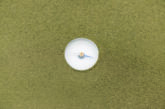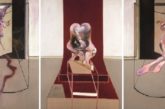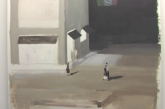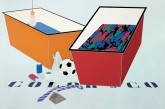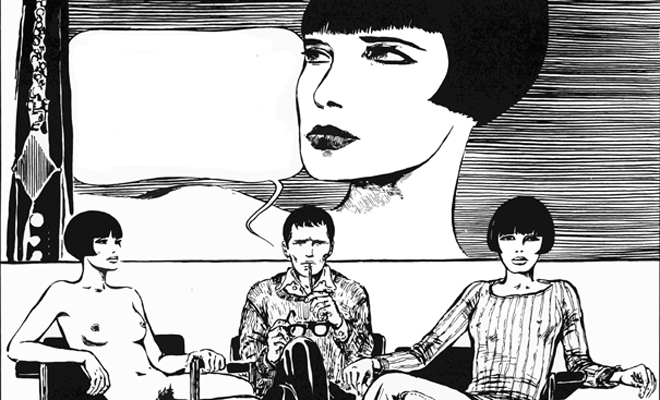
Una mostra per raccontare un artista, una esposizione che non è dedicata solo a Valentina, ma è incentrata sul suo creatore e il suo mondo. Ricorrono quest’anno i dieci anni della scomparsa di Guido Crepax, che se fosse vivo avrebbe festeggiato spegnendo ottanta candeline, e questo è il pretesto all’origine della mostra, promossa dal Comune di Milano e prodotta da Palazzo Reale con l’Archivio Crepax, curatore integrale del progetto.
La mostra, aperta al pubblico fino al 15 settembre, si snoda nelle dieci sale dell’Appartamento di Riserva di Palazzo Reale, dieci gioielli che da soli meriterebbero una visita e che con la ricchezza delle carte da parati e delle decorazioni di pareti e soffitti danno un tocco quasi magico ai materiali esposti. Dieci ambienti, ognuno volto ad approfondire uno dei molteplici aspetti della vita e delle opere di Crepax, per riflettere sui legami tra la sua opera e le altre arti, dalla letteratura al cinema, dalla fotografia alla moda, dal design alla musica e all’arte.
Crepax si laurea in architettura, inizia come disegnatore free lance di prospettive, disegna copertine di dischi grazie alla collaborazione col fratello Franco, discografo, si dedica alla grafica pubblicitaria, firmando prestigiose campagne pubblicitarie che gli fecero vincere la Palma d’Oro nel 1957. Guardando le sue fotografie, le tavole originali e le scenografie nelle sale, abbiamo la possibilità non soltanto di scoprire l’arte, la tecnica e la storia personale di questo artista, ma siamo in grado di cogliere gli stretti legami tra i personaggi da lui inventati e la sua famiglia, di leggere i fatti storici e i cambiamenti sociali che adesso troviamo descritti ed elencati nei libri, di rivedere e ritrovare quei fenomeni di costume, le mode, gli oggetti d’arredamento che hanno fatto la nostra storia. (…)
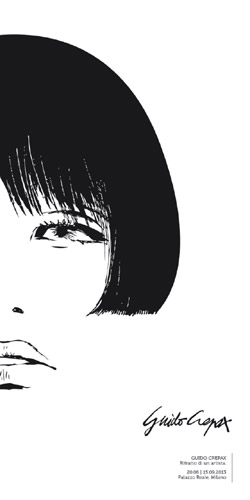
This exhibition is an ode to the artist, an exposition that is not merely dedicated to Valentina, but centres on her creator and his world. The pretext for the exhibition (promoted by Milan City Council and by Palazzo Reale, along with Archivio Crepax) is to commemorate ten years since Guido Crepax’s death, who also celebrates his eightieth birthday this year. The exhibition is open to the public until the 15th of September; it spreads over the ten rooms of the Appartamento di Riserva of Palazzo Reale. They are ten jewels that merit a visit in their own right and that, with their rich wallpapers and their extravagantly decorated walls and ceilings, lend a touch of magic to the materials on show. Ten chambers, each devoted to one of the numerous aspects of Crepax’s life and work, which cohesively reflect on the links between his work and other forms of art, from literature to cinema, from photography to fashion, from music to visual art. After he graduated with a degree in Architecture, Crepax begins his career as a freelancer, drawing 3D sketches. He then proceeded to design CD sleeves for his brother’s music label and from there moved to graphics in publicity, collaborating in prestigious advertising campaigns, culminating with the awarding of the Palme d’Or in 1957. By observing his photographs, his original sketches and scenography, we are not only able to see the art, the technique and the personal history of the artist, but we also have the opportunity to understand the strong links between his characters and his family, to read the historical facts and social changes that are now reported in textbooks and to rediscover and behold once more those costumes, those fashions and furniture that have constructed our history.
Martina Ganino
D’ARS year 53/nr 215/autumn 2013 (abstract dell’articolo)

